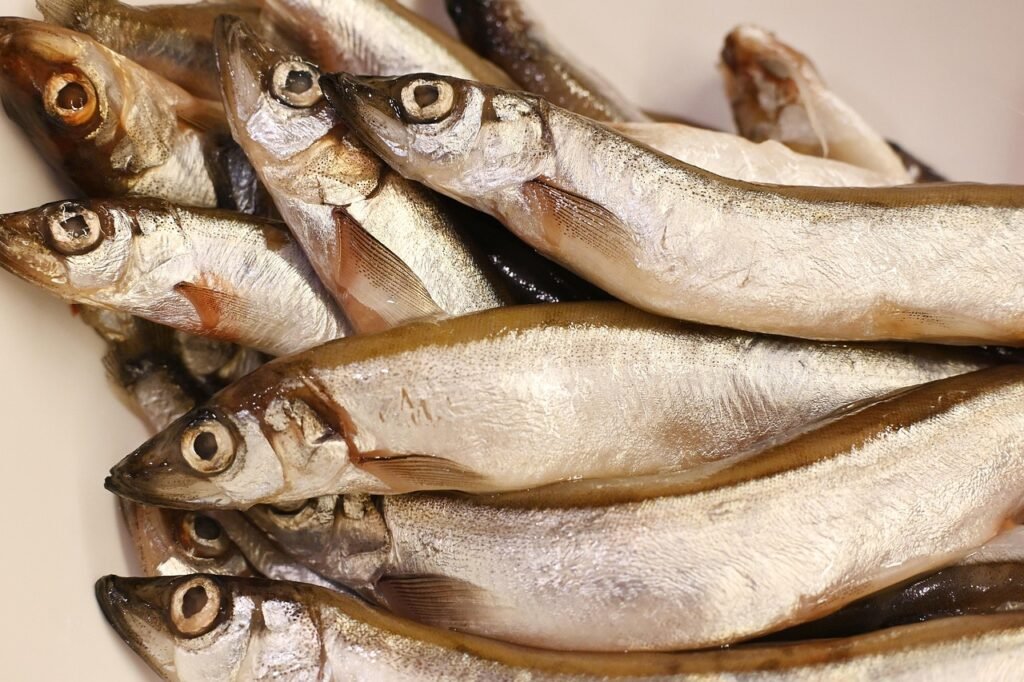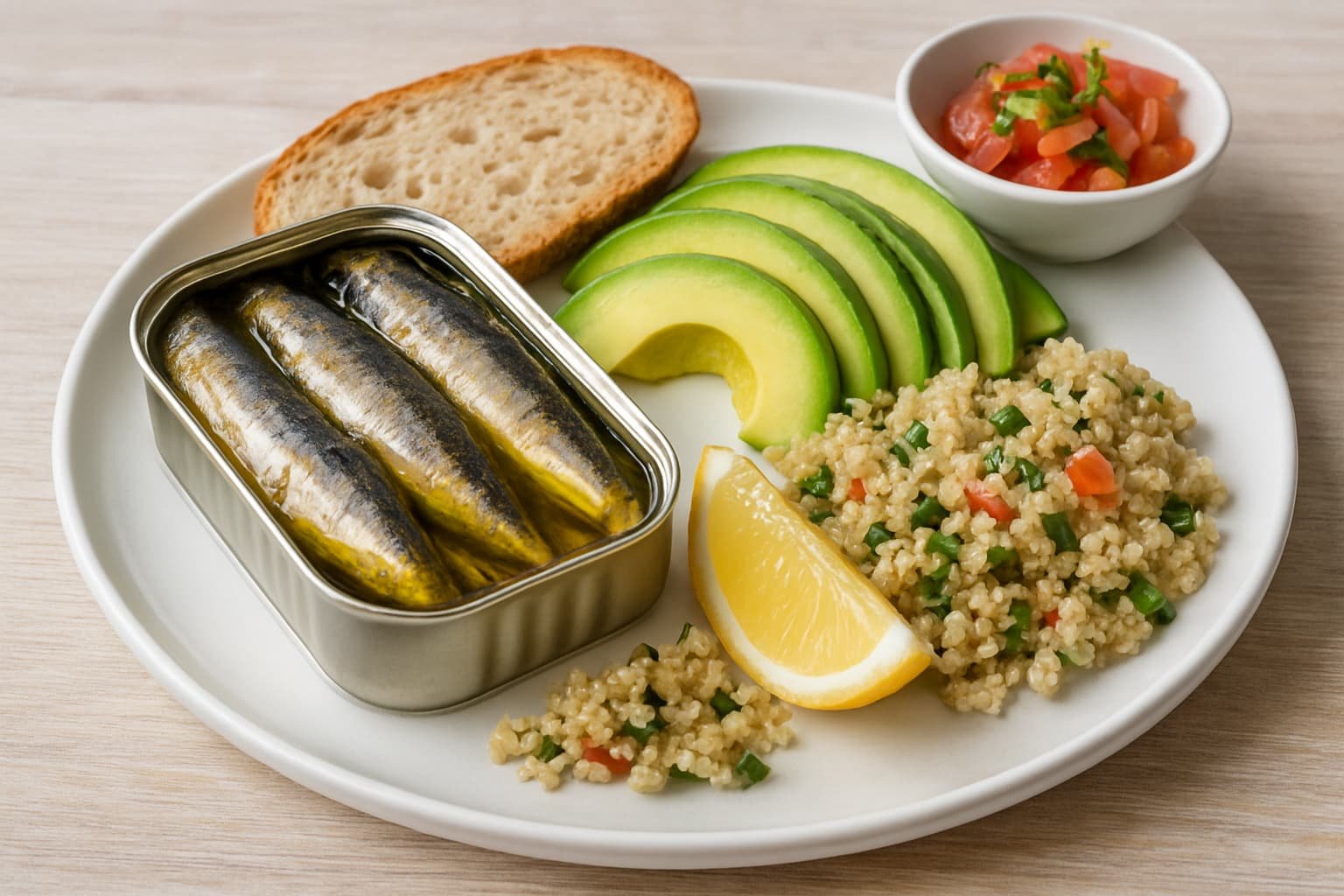Tinned Fish: 2025 Surprising Superfood for a Healthier Diet
Once overlooked as an old-fashioned pantry item, canned fish is making a big comeback in 2025—not just as a quick and easy option,
but as a nutrient-packed meal that’s winning over health-conscious eaters. As the price of food rises, health consciousness
increases and a world looks towards sustainability, this simple staple has become the go-to for clean eaters, fitness enthusiasts as well as being used by gourmet chefs.
What Is Tinned Fish?

Tinned fish is made by taking fresh fish, processing it, and then sealing it inside an airtight can before cooking it with heat to keep it fresh and flavorful for a long time.
Some of the more popular types include sardines, tuna, mackerel, salmon, anchovies, and herring. The ingredients are
cooked and preserved in a manner that holds nutrients for months, sometimes years, and all without the help of refrigeration.
Nutritional Powerhouse
Canned fish is shockingly good for you:
- Omega-3 fatty acids: These good fats promote heart health, decrease inflammation and promote optimal brain function.
- Protein packed: Small, but mighty Little oz. can contains up to 20g of clean, complete protein and all 9 essential amino acids.
- Calcium & Vitamin D: With bone-containing types like sardines and salmon, you’re getting bone-building nutrients.
- Low in carbs: And that’s great if you are doing a keto/low-carb diet. Why It’s Trending in 2025
- Here’s why tinned fish is being called a “superfood” and is trending around the world:
1. Sustainability
Small oily fish that are wild-caught, such as sardines and mackerel, have small environmental footprints. Today there are many
options for taking the eco- friendly route, with plenty of brands that provide MSC-certified sustainable choices.
2. Affordability
Canned seafood is drastically more affordable than fresh, and so healthier food is within reach for the average Joe.
3. Convenience
Cooking and refrigerating are not necessary. Great to grab for a quick lunch or in emergencies. It’s also shelf-stable, making it a great food to stock up on.
4. Culinary Revival
Social media and the influences have converted canned fish into a luxury. With creative plating, suggested olive oil
pairings and charcuterie-style servings, #Tinned Fish Date Night has turned into a bona fide trend on TikTok and Instagram.
How to Eat Canned Fish the Right Way
- There are endless delicious and healthy ways to eat tinned fish:
- Toss sardines with whole grain toast, avocado and lemon.
- Mix tuna with Greek yogurt, celery and herbs for a healthier tuna salad.
- Throw mackerel into quinoa or rice bowls along with vegetables. Try a garlicky, anchovy-sauced olive oil over your pasta.
- Enjoy it right out of the can with some crackers and pickles for a quick, protein-packed snack.
What to Watch Out For
- As much as tinned fish is just so gosh-darn good for you, here are some notes:
- Look at sodium: Some brands contain excessive salt.
- Stay away from the sugars or the heavy sauces with flavored teas.
- If possible, opt for BPA-free cans for long-term safety.
- Opt for fish lower in mercury, such as sardines or salmon.
Final Thoughts
Canned fish is no longer just for survival. In 2025, it’s a contemporary superfood — full of nutrients, eco-friendly, no-brainer
to cook and delicious. Be it to eat cleaner, save money or decrease your carbon footprint, adding tinned fish to your diet
could be a smart and tasty play.
(FAQs)
1. THERE are currently rising prices of tinned fish, so is it healthy to eat every day?
Yes, tinned fish can be a healthy choice when eaten in moderation. It’s loaded with omega-3s, protein, and calcium.
Just make sure to choose low-sodium options and try not to eat too much of the varieties that are high in mercury, like tuna.
2. Which canned fish is the healthiest?
Some of the healthiest options include sardines, mackerel and salmon. They’re low in mercury, high in omega-3 and
often have edible bones, providing calcium.
3. Can canned fish play a role in weight loss?
Absolutely. Tinned fish is a good source of protein and healthy fats which help to keep you full and your metabolism up.
Opt for water-packed or olive oil-packed for the best results.
4. Are tinned fish better than freshly caught?
Both have their benefits. Fresh fish tastes better; tinned fish is easier and will last on your shelf. If processed and
stored correctly, they are nutritionally very similar.
5. How long does tinned fish last?
If you store tinned fish in a cool, dry place, it can stay good for anywhere from 2 to 5 years. Just remember to check the
expiration date, and steer clear of any cans that look swollen or rusty.
6. Can children eat tinned fish?
Yes, most tinned fish is healthy and safe for kids, especially sardines and salmon, which are relatively low in mercury.
Opt for BPA-free packaging and low-sodium varieties every time.
7. Can we eat bone also for tinned sardines or salmon?
Yes. They are soft, crunchy and edible, and contribute to a rich calcium and phosphorus diet for strong bones.
8. What’s the tastiest way to eat tinned fish?
You could eat tinned fish in salads, in sandwiches, over pasta or on a cracker. It’s perfect for quick, no-cook meals, and
goes nicely with avocado, lemon and herbs.


1 thought on “Tinned Fish: 2025 Surprising Superfood for a Healthier Diet”